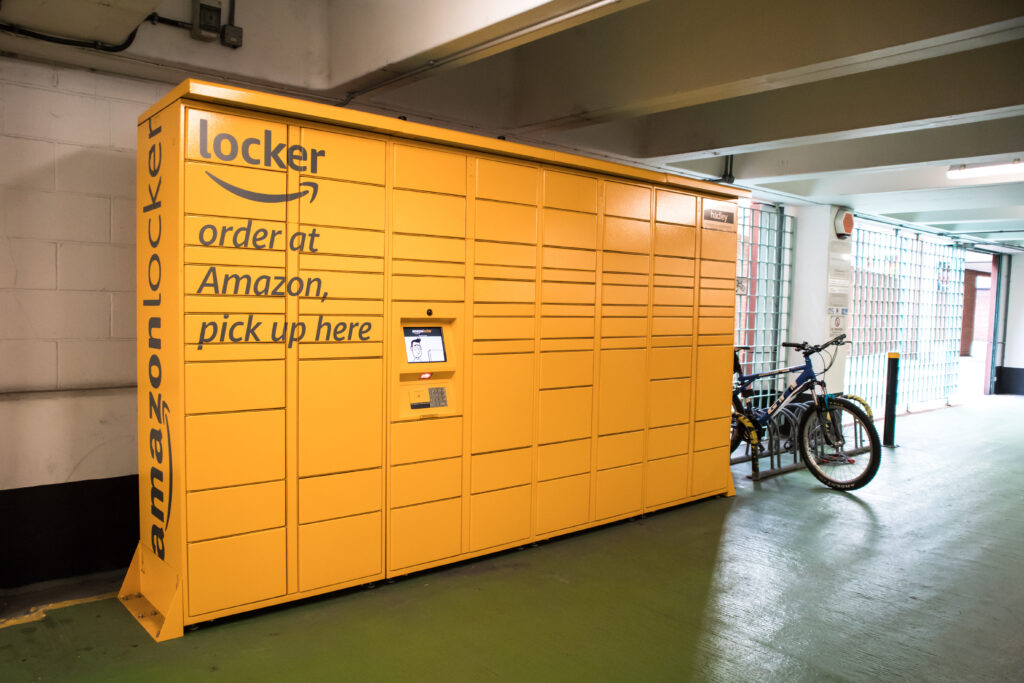As we get deeper into peak season, the need for last-mile capacity becomes ever more important.
Amazon parcel locker network grows
Amazon has partnered with fuel retailers across Europe to install parcel lockers in service station forecourts. In Spain, Amazon partners with Repsol, with the first lockers installed in 2017.
Last month, Repsol announced it has reached 430 Amazon lockers across its network, with over three million parcels delivered.
Globally, fuel retailers have been looking to enhance their offering, through partnerships with supermarkets as well as installing electric vehicle (EV) charging points. Rising fuel prices, increased use of carsharing services and the take-up of EVs have forced fuel retailers to review their setup. Parcel lockers can be seen as part of that diversification strategy.
Lockers are the only sensible out-of-home delivery option for fuel stations due to a lack of space and staff. Although these locations are not always ‘slipper distance’ for B2C deliveries, they may be ‘on the way’ and are pretty good for the odd B2B parcel. One advantage is the potential to install in several locations, as most petrol station networks are quite dense.
Increasing parcel locker capacity
Lietuvos Paštas (Lithuanian Post) is expanding its LP EXPRESS parcel locker network just in time for peak season. About 60 of its most popular parcel locker banks have been extended, adding 4,500 new doors.
There are 285 LP EXPRESS parcel lockers, with over 42,000 doors, in cities and towns across Lithuania. Lietuvos Paštas plans to double this network by 2025.
Lockers (and PUDOs) are key to increasing capacity and improving first-time delivery, and Lietuvos Paštas is right to expand its locker business. A further benefit is that lockers are more environmentally friendly and can reduce the carbon footprint by some two-thirds in urban areas and even more in the countryside.
Opening the post office network to other carriers
In the UK, Post Office Ltd (POL) has exceeded its target of 3,000 post offices offering click-and-collect services by the end of 2021.
For some years, POL has offered an out-of-home delivery service at post offices, but only for Royal Mail deliveries. This exclusive deal has ended and other carriers are starting to use the UK post office network for out-of-home delivery.
Since August, DPD has been delivering parcels directly to post offices for customer collection. In September, POL confirmed it was extending its click-and-collect service for Amazon.
The network of post offices enabled for carrier-neutral click-and-collect is growing, from only a few hundred earlier this year to over 3,100 now. There are about 11,500 post offices across the UK so there is a clear opportunity to create the densest out-of-home network in the country; POL’s main OOH competitor, Collect+, has some 7,000 PUDO points.
One thing is clear: out of home will be increasingly important in the UK as capacity issues grow. Post Office Ltd’s special situation (being a separate business to Royal Mail) makes it easier to become an agnostic partner for carriers and e-commerce alike.
Extended post office opening hours
Lietuvos Paštas has started a pilot project in the town of Pandėlis, where postal services will be provided at the local Aibė grocery store instead of a standalone post office.
One of the major benefits to customers is the extended opening hours. The Aibė store is open 8:00am to 8:00pm, seven days a week.
Lietuvos Paštas operates in a competitive parcel market. While it has been aggressively growing its LP EXPRESS parcel locker network, the gaps in that network can be filled in by post offices acting as PUDOs. It makes sense to partner with a business open 12 hours a day every day of the week.
Follow the Last Mile Prophets on LinkedIn
 Ian Kerr is the founder and host of the Postal Hub Podcast, the weekly podcast for the postal and delivery sectors.
Ian Kerr is the founder and host of the Postal Hub Podcast, the weekly podcast for the postal and delivery sectors.

Marek Różycki is managing partner at Last Mile Experts, specializing in CEP and e-commerce last-mile advisory.


